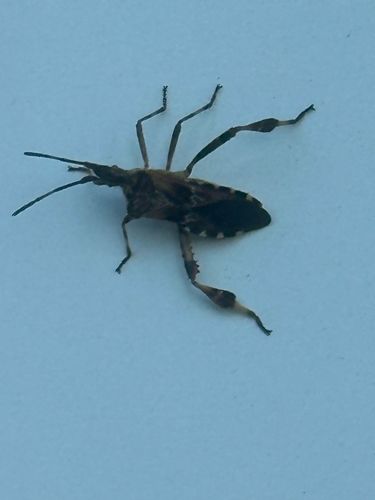Western Conifer Seed Bug
Scientific Name: Leptoglossus occidentalis
Order & Family: Hemiptera, Coreidae (leaf-footed bugs)
Size: 15-20 mm (0.6-0.8 inches)

Natural Habitat
Forests, woodlands, and urban areas where coniferous trees (pines, firs, spruces) are present. They often seek shelter in homes during colder months.
Diet & Feeding
Primarily feeds on the seeds and sap of coniferous trees, especially pines and firs. They use their piercing-sucking mouthparts to extract fluids from cones, needles, and developing seeds.
Behavior Patterns
These bugs are known for their strong flight and can travel considerable distances. In late summer and fall, adults often aggregate and seek sheltered locations, including human dwellings, to overwinter. They are not known to bite or sting when handled but may release a foul-smelling odor as a defense mechanism when disturbed.
Risks & Benefits
Potential risks include being a nuisance pest when they enter homes in large numbers. While they do not cause structural damage or pose a health risk to humans, their presence can be bothersome. As for benefits, they are a natural component of forest ecosystems, though significant outbreaks can impact seed production in some conifer species.
Identified on: 9/26/2025